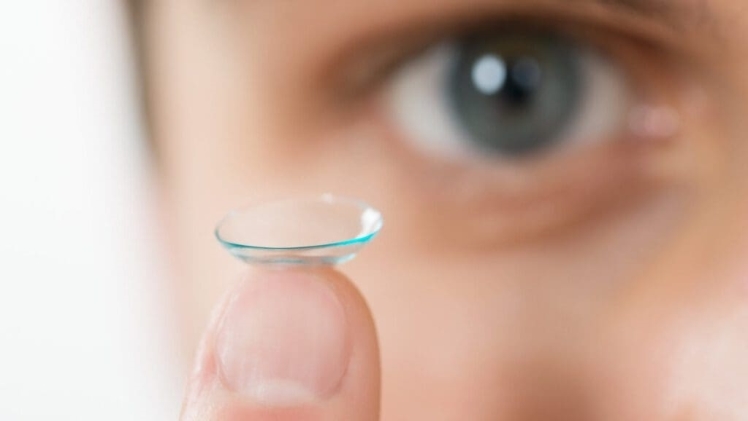Contact lenses have revolutionized the way people correct their vision, providing a comfortable and convenient alternative to traditional glasses. Tinted contact lenses, in particular, offer an additional benefit by enhancing or changing the color of the eyes. While tinted contact lenses can be an excellent option for many individuals, they also come with their own set of disadvantages and considerations. In this blog post, we will delve into the potential drawbacks of tinted contact lenses to help you make an informed decision about your eye care needs.
Understanding Tinted Contact Lenses
Before delving into the disadvantages, let’s briefly understand what tinted contact lenses are. Tinted contact lenses are soft contact lenses that are designed to change or enhance the color of the iris. They are available in a wide range of colors, from subtle enhancements to dramatic changes like switching from brown eyes to blue or green.
Disadvantages of Tinted Contact Lenses
- Limited Prescription Options: One of the primary disadvantages of tinted contact lenses is that they may not be available in all prescription strengths. People with severe or unique vision prescriptions may find it challenging to obtain tinted lenses that meet their specific needs. This limitation can restrict the choices of those who rely on strong prescriptions for clear vision.
- Potential for Irritation: Tinted contact lenses, like regular contacts, can cause irritation and discomfort if not properly fitted or cared for. The pigments used in tinted lenses may also contribute to irritation for some individuals, especially those with sensitive eyes or allergies to certain substances. It’s crucial to follow proper hygiene practices and consult with an eye care professional if you experience persistent discomfort.
- Cost Considerations: Tinted contact lenses are often more expensive than standard clear lenses. The added cost stems from the manufacturing process involved in creating colored lenses and the specialized technology required to ensure comfort and safety. The higher cost of tinted lenses may pose a significant disadvantage for budget-conscious individuals.
- Limited Availability in Toric Lenses: Toric contact lenses are designed to correct astigmatism, a common refractive error. However, tinted toric lenses (those that correct astigmatism and have a tint) may not be as readily available as clear toric lenses. This limitation can affect individuals with astigmatism who also desire tinted lenses for cosmetic purposes.
- Risk of Overwearing: Some people may be tempted to wear tinted contact lenses for extended periods, especially if they are pleased with the cosmetic effect. However, wearing any type of contact lens for too long can lead to various eye health issues, including dryness, irritation, and an increased risk of infections. It’s crucial to adhere to the recommended wearing schedule and replace lenses as directed by your eye care professional.
- Maintenance Challenges: Tinted contact lenses require the same level of care and maintenance as regular contact lenses. However, the pigmented layer in tinted lenses can be more prone to damage if not handled properly. Users must follow the prescribed cleaning and storage instructions to avoid compromising the color or integrity of the lenses.
- Limited Durability of Color: Over time, the color intensity of tinted contact lenses may fade or change slightly due to factors such as exposure to sunlight, cleaning solutions, and wear and tear. This gradual fading can be particularly noticeable in lenses with more vibrant or unusual colors. Regular replacement according to the recommended schedule can help maintain the desired color effect.
- Potential for Misalignment: Tinted contact lenses rely on proper alignment with the iris to achieve the desired cosmetic effect. However, factors such as eye movement, lens rotation, or improper fitting can lead to misalignment, causing the colored portion of the lens to shift away from the center of the pupil. This misalignment can diminish the desired color enhancement and may require adjustments or a different lens type.
- Not Suitable for Everyone: While tinted contact lenses are popular for cosmetic purposes, they may not be suitable for everyone. Individuals with certain eye conditions or irregularities may need specialized lenses or may be advised against wearing tinted lenses altogether. It’s essential to undergo a comprehensive eye exam and consultation with an eye care professional to determine the best lens options for your specific needs and eye health.
Conclusion
While tinted contact lenses offer a convenient and aesthetic option for changing or enhancing eye color, they also come with several disadvantages and considerations. Users must weigh the pros and cons carefully before opting for tinted lenses, from limited prescription options and potential for irritation to cost considerations and maintenance challenges. Consulting with an eye care professional is crucial to ensure proper fitting, usage, and maintenance of tinted contact lenses while prioritizing eye health and vision correction needs. Ultimately, making an informed decision based on individual preferences, lifestyle, and eye care requirements is key to enjoying the benefits of tinted contact lenses safely and effectively.

